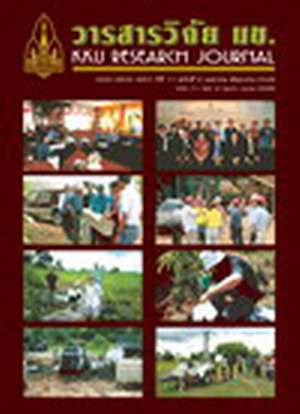Hypoglycemic activity of three thai traditional medicine regimens in streptozotocin-induced diabetic rats (Thai)
Main Article Content
Abstract
Thailand has a long history of utilization of traditional medicine and until now not a few Thai people still use medicinal plants for diabetic treatment. However, there is no scientific evidence ascertaining the hypoglycemic activity of any of them. This study investigated the hypoglycemic activities of three Thai traditional antidiabetic regimens (I, II and III) in both streptozotocininduced type 1 and type 2 diabetic rat models. It was found that the ethanolic extract of Regimen I and III at doses of 1 g/kg bw, but not Regimen II, decreased the blood glucose of type 2 diabetic rats significantly by 20.67±4.86 and 33.11±7.61% respectively. Regimen I consisted of Arcangelisia flava Merr., Albizia myriophylla Benth., Xylinbaria minutiflora Pierre., Holarrhena pubescens Wall., Solanum trilobatum Linn., Pandanus tectorius Sol., Harrisonia perforata Merr. and Capparis micracantha DC.. The components of Regimen III were Tinospora crispa Miers., Acanthus ebracteatus Vahl., Phyllanthus amarus
Schum. & Thonn., and Arcangelisia flava Merr. Unfortunately, none of the three tested Regimens had hypoglycemic actvitity in type 1 diabetic rats. In conclusion, the Regimen I and III showed antidiabetic activities in streptozotocin-induced type 2 diabetic rats.


